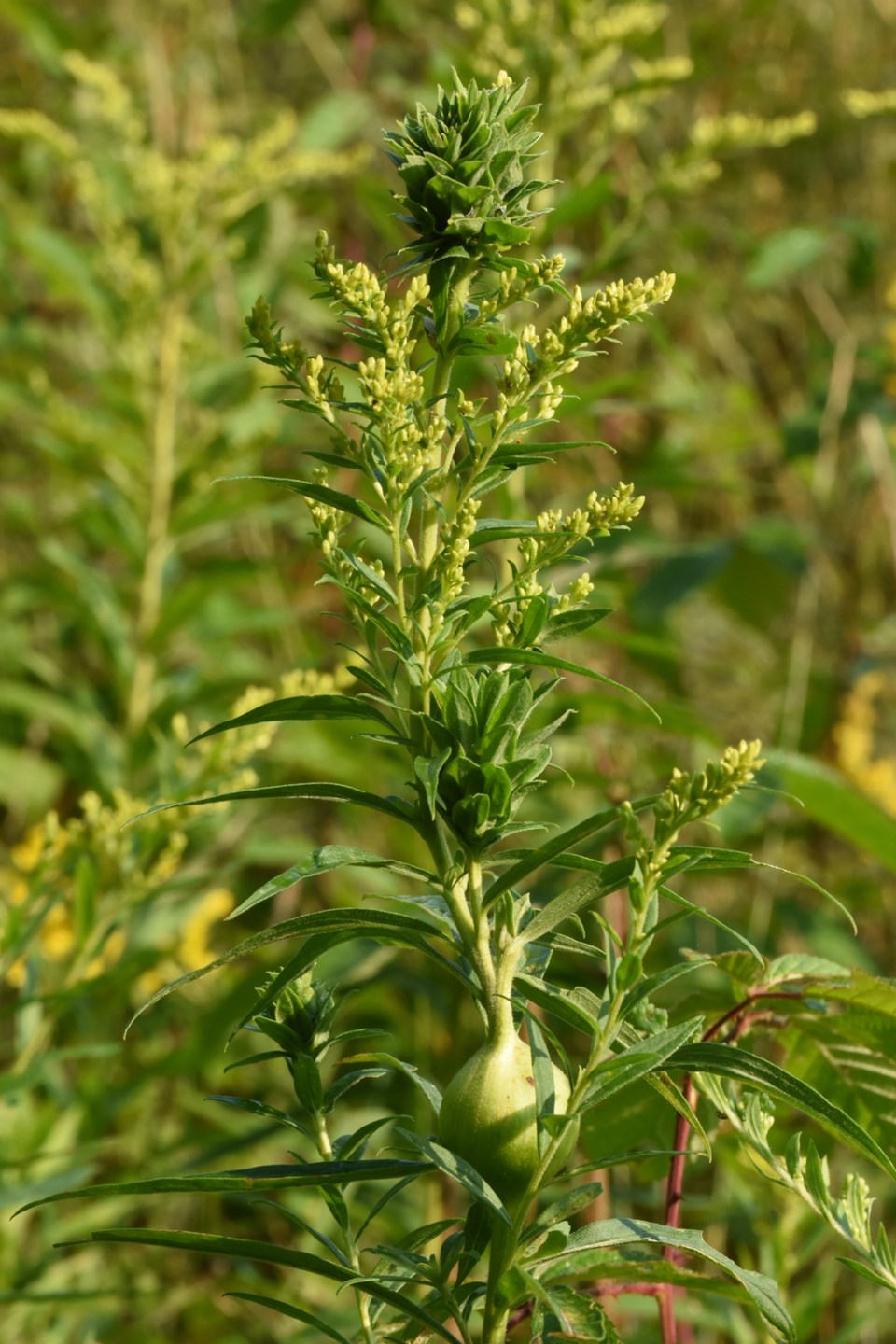I read somewhere, once upon a time, that "if a botanist is ever condemned to the severest punishment that the underworld can mete, the penalty will be to write a monograph accurately describing and identifying all the known goldenrods."
This mythical threat is not too far off base, as over 50 kinds of goldenrod are found in southern Ontario… and many hybridize with each other.
Another budding naturalist once mumbled in frustration (might well have been me talking to myself) that "to name all these species, as well as those of the asters, the sparrows and the warblers at sight is a feat probably no one living can perform."
Maybe so, but there are those keeners out there who are constantly honing their identification skills, as if attempting a 'grand slam' of natural history.
The other evening Julie and I went for a walk along the farm stream to see if any thimbleberries were still ripe for the picking (they were!). The meadow area adjacent to the streambank was glowing with the new blooms of goldenrod, and we stopped to marvel at a particularly bright patch.
Once we started looking around it was obvious that several species of goldenrod were growing in this half-acre patch.
Tall goldenrod with its showy crown was the most abundant, while rough-leaved goldenrod with the appropriately textured leaves were scattered throughout, as were several of the well-named lance-leaved goldenrod.
There were also two other types sporting tufts of yellow flowers, but they are as of yet unidentified.
Goldenrods are unusual in the plant world as their blooms begin at the tips of their spikes, rather than the base. One theory is that to overcome competition from neighbouring asters, they have to attract insects by being the tallest and most easily accessed. As the autumn progresses and the competition literally dies back, the lower goldenrod blooms then open.
It seems a shame that goldenrod is the scapegoat for less than pleasurable human interests as the beautiful blooms are often falsely accused of causing allergic reactions within our noses.
The pollen of all goldenrod plants is sticky, requiring an insect to wander about the plume of blooms in search of nectar. This is the critical evidence that exonerates this group of flowers from the gang of allergens which cause 'hay fever'. It is the wind-borne pollen, from such plants as ragweed, that clogs your nose and reddens the eyes.
Goldenrod is actually a medicinal plant, as the genus name, Solidago, means "to make whole", a reference to its healing properties. Many references can be found from both European and Native North American records as to uses of this plant.
During the first year of growth from a seed, this plant produces only a leafy stem. In the autumn of its second year it blooms but also begins a vigorous underground growth system producing about five rhizomes that grow in a radiate pattern, creating a large circular root system.
The following year the root tips come up as stems, and later their roots also grow new rhizomes. Soon a large and somewhat circular patch of goldenrod is established.
Each of the stems is a genetic clone from the original seed. Clones tend to grow at the same height, but a different clone group of the same species may grow at a different height. It is usual to find clones growing in a cluster up to eight feet in diameter. The stems are often so close together that no other plants can set roots, until the central plants in the clone die back… and this may take 80 to 100 years!
When you find a patch of goldenrods look also for galls, the swellings caused by insects living within the stems and leaves.
A round hard ball in the stem is caused by the spot-winged fly, while an elliptical swelling is created by a small moth, and a bunched rosette of leaves indicates the work of a tiny insect called a midge (both of these may be seen in the photograph above).
While these insects utilize the plant sap for food they do not kill the plant, just cause some weird growth changes. Another midge creates a home for itself within the leaf, looking like a drop of India ink at mid-leaf.
If you like looking for wildlife, take the time to peruse a stand of goldenrod; on the bloom clusters you will probably find crab spiders, praying mantis, paper wasps, ambush bugs and others.
Calendar-wise we are on the cusp of the season of colour and the goldenrods lead the parade, their golden presence indicating that summer is 'officially' over.
Prepare yea now for the inundation of asters, warblers in look-alike fall plumage and, woe, sparrows of like markings.
